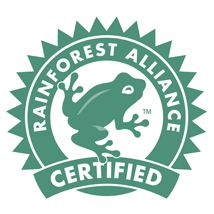Caste System and Trafficking in India
Human trafficking is something we hear about in Australia as a distant practice ‘out there’ in the third world. The horror of it makes us think that must be an illegal under ground practice that happens to the small populations of the most unfortunate. But it is far more prevalent than we can conceive from the context of the comfortable lives we live in Australia.
Today I had the privilege of meeting with Dr kancha Ilaiah of xx University in Hyderabad who shared with us his extensive knowledge of the India underclass, and how they are trafficked into sex slavery and manual labour. Here’s a short snippet:
The India Caste System
There are 6000 levels of the India caste system. Caste is inherited and deeply embedded in religious beliefs. The highest of the caste system are the political and religious leaders, the next layer are the educated such as doctors, lawyers and business people. Approximately 52% of the total India population falls into the middle caste layers they are essentially the workers like the farmers, the shop owners.
The caste system is not just a cultural bias, it is written into the Hindu scriptures and so engrained in the Indian belief system. The scriptures write that God created the highest class from his head, the leaders from his shoulders, the working class from his thighs and the farmers from his feet. So it’s written in the scriptures that man was not created equal.
The Dalits – Living below the class system
Often also referred to as the ‘untouchables’, Dalits live below the caste system in India. They are considered not to be human. While the Hindus believe God created the other classes (though unequally), they don’t believe the Dalits were created by God – they just became. Dalits are labourers without land or businesses so they make whatever living they can from doing the most unpleasant of jobs, most often emptying Indian toilets.
Indians from other classes are not allowed to touch the Dalits, they are not able to eat together. Dalits can not live as neighbours to members of other castes so they live in isolation in squalor together in slums. When they do work, they are paid about half of the minimum wage, on average about 200 rupees per day, which is around $4.
Vulnerability to trafficking
About 50% of the world’s trafficked people are in India, and the majority of them are Dalits. These numbers are indicative through research here in the University only, there’s actually no way to know what true numbers are due to the underground nature of the industry.
The Dalit Freedom Network in India estimate that there are around 200 million Dalits, and that around 10% of those are trafficked and working in slave like conditions. The Oasis India group, an agency working on anti-trafficking programs in India say that a child is trafficked in India every 20 seconds.
The Dalits are most vulnerable to trafficking because they are dehumanised, and they are desperate. Most often it begins with Dalit families that are at crisis point, unable to support their children. So they sell them.
There are agents that travel to villages and they target families suffering the most and begin to influence the families that this is their only choice. Once agents have bought the children they are sold to the cities and swallowed up into a highly sophisticated and well orchestrated trafficking industry
Where do they end up?
Quite simply, girls are sold into prostitution and boys into menial labour. Without any education, without any rights as a human being, they live as slaves being used by men or by making stuff.
That stuff that the slaves make then goes off into the global supply chain for us to consume.
Human Trafficking is a problem for everyone
Think human trafficking and slavery doesn’t touch you at home in Australia? Do you consume cotton, tea, nuts, rice….? Do you know where it comes from? … think again.
How you can help
There are a number of organisations that work hard to support the rights of the underclass in India and on programs for prevention of human trafficking. These organisations are active here at home. Three key organisations to support and follow are the Dalit Freedom Network, Oasis, and Stop the Traffik.
You can also do a bit of research on your own favourite brands of chocolate, tea, coffee, apparel, to see whether there is effort being made to source these items ethically. If it is not, we as consumers have the power to engage in conversation with these companies and demand that systems change to ensure that fair prices are paid to enable a living wage for workers at the end of the line.
The answer is not in boycotting products that are produced, that worsens the problem. It is to rise up and demand that the companies we buy our stuff from work harder to trace their supply chain and support communities in the third world rather than exploit them.








